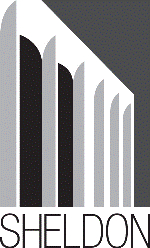Fine and Performing Arts, Hixson-Lied College of

Sheldon Museum of Art: Catalogs and Publications
Date of this Version
2006
Citation
19th Annual Sheldon Statewide Exhibition, Sheldon Memorial Art Gallery, University of Nebraska-Lincoln, 2005-2006.
Abstract
Photographers create images that look like paintings, and painters make paintings that look like photographs. Who is imitating whom and why?
Long before photography was invented painters who could depict realistic imagery were held in high esteem. When photography was first invented, its ability to capture reality was also greatly admired. Over time, however, its status declined and eventually it was viewed as merely a mechanical tool with little artistic value.
Henry Peach Robinson (1830-1901) popularized the emulation of painting and encouraged artificiality in photography. It was believed that if a photograph were made to look like a painting it would be more acceptable as a fine art form. This approach called pictorialism increased the popularity of photography and Robinson's followers continued to create sentiment and mood in their work.
Alfred Stieglitz (1864-1946) further elevated the status of photography when he established Camera Notes and the Photo-Secession group. Slowly, museums began collecting and exhibiting photography, as did collectors. Some photographs that were being exhibited were mistaken for paintings, which was considered a compliment to those who saw themselves as pictorialists, but for those who had adopted a pure method of photography it was an insult.
With the invention of photography painters were freed from the need to capture reality resulting in the exploration of abstraction in art. The Abstract Expressionist movement evolved and flourished. The tables began to turn in the 1960s when the Pop Art movement challenged its predecessor by creating recognizable images that made a more direct comment about American popular culture. Pop artists such as Andy Warhol and Ed Ruscha began to incorporate photography into their art. The Photo-Realist movement directly followed in the footsteps of Pop Art and took its reliance on and reference to the photograph one step further. Emerging in the 1970s, these artists main objective is to create images of everyday objects that are "photo-real" in their appearance. This exhibition explores why photographers create art that takes on the qualities of painting and why painters go through the painstaking process of creating a painting that looks more like photography than the photograph itself.


Comments
All images are copyright by the original artists. Publication copyright 2006 The Regents of the University of Nebraska